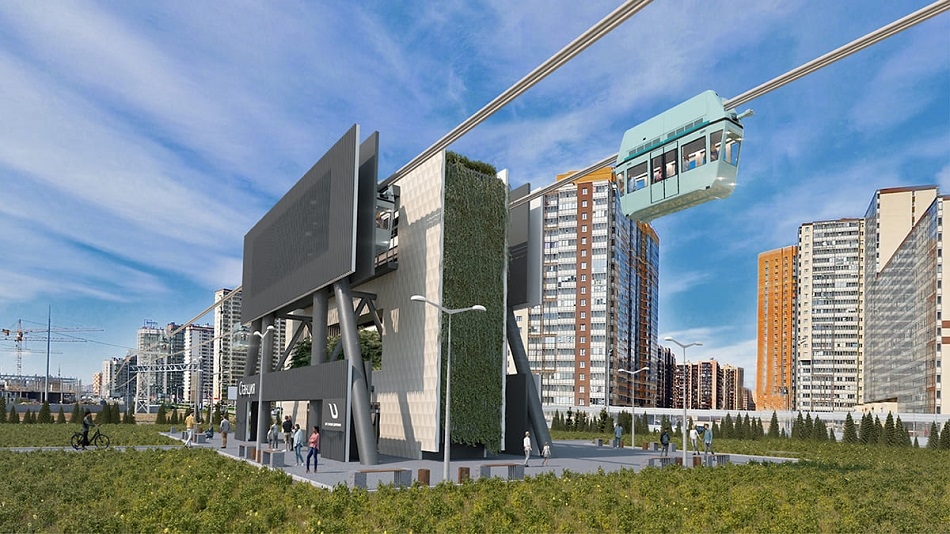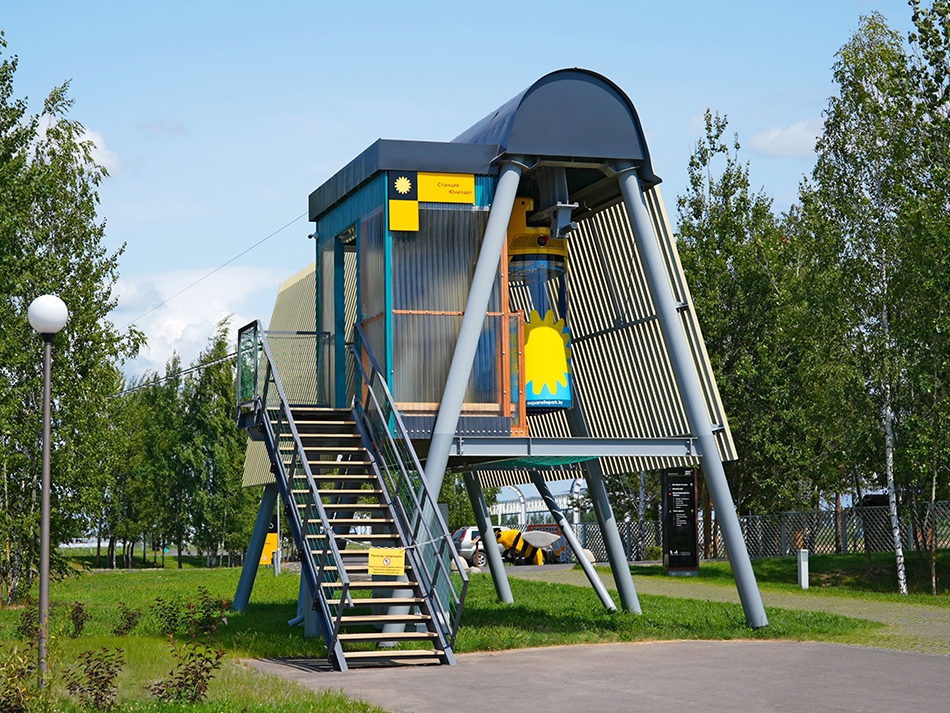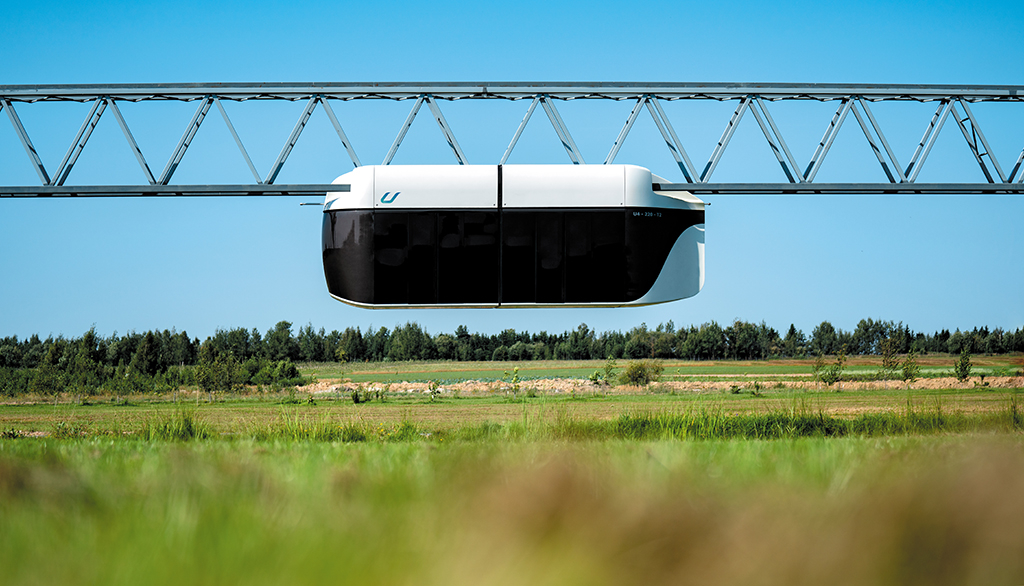CEO of UST Inc. in Forbes Publication: "It Is Important to Be More Decisive When Introducing New Technologies"

This expert opinion by Nadezhda Kosareva, CEO at Unitsky String Technologies Inc., has been published on the website of Forbes, one of the most reputable and well-known financial and economic publications in the world.
The new article is focused on the problem of implementing uncrewed cargo transportation and options for its solution. The article discusses the challenges that the transport industry will face when launching automated and unmanned trucks, as well as alternative methods of cargo delivery. In addition, the emphasis was made on the opportunities that the use of new technologies opens up to representatives of the logistics sector instead of attempts to transform the old transportation base.
Read more about the opinion from the CEO of UST Inc. in the article provided below.
A Look Into Autonomous Cargo Transportation
Many in the industry are coming to realize that the mass introduction of uncrewed transportation is imminent — especially as the companies interested in this technology continue to grow.
I see a worldwide shortage of drivers as greatly contributing to the popularity of automated solutions. For example, in Eurasia in 2022, 26% of the driver vacancies were said to remain open. And the American Trucking Associations (ATA) predicts that the current shortage of drivers will grow to over 160,000 by 2028.
As someone who heads a company that builds string rail complexes, I've seen the potential for automated transport to increase efficiency, improve safety and lessen our environmental impact. In looking toward solutions, I'd like to highlight burgeoning innovations and hurdles in autonomous rail transport so business leaders and investors can stay ahead of the curve and gain a competitive edge in the industry.
What Prevents The Launch Of Uncrewed Trucks?
Despite its continuing independence, autonomous driving technology cannot yet completely exclude a person from the driving process, and even taking into account the tested autonomous vehicle models (currently at levels 2 and 3, which are driver-assisted and partially automated), the driver should be in the cab in case of an emergency.
Automated trucks, particularly, are not yet suitable for highways with heavy traffic. Eventually, I believe that the efficiency and safety of this mode of transportation can be maximized if safe, dedicated lanes are created and the shortest paths are laid.
But the risk of litigation and the information gap regarding the distribution of responsibility can slow down the introduction of uncrewed trucks into a company’s operation. I think it is necessary to define liability of traffic participants in the event of an accident and to propose new insurance terms for cargo transportation.
There is also the issue of sustainability when it comes to these transportation solutions. Today, around 3 million trucks operate on U.S. roads. Meanwhile, cargo transport accounts for 29% of all greenhouse gas emissions. In the United States alone, 1.8 million tons of microplastics are accumulated per year because of cars. In addition to tire wear, artificial road coating (up to 50%), brake wear (8%), and traffic striping (5%) are also sources of tough abrasives.
Instead of overcoming a pool of difficulties, it could be more effective to fundamentally change our approach when it comes to creating a more environmentally friendly and safe mode of transportation. While the technology continues to improve toward fully autonomous trucks, I wonder if investors and others might look to the already capable and fully autonomous solutions that show promise to transform the cargo industry if taken to scale.
A Survey Of Uncrewed Cargo Transportation
Autonomous management systems have already proved their effectiveness in passenger transportation. There are uncrewed metro in Dubai, automated monorail in Wuhan, driverless trains in New Delhi and autonomous rail-free tram in Zhuzhou, central China’s Hunan province. Such elevated and light rail transport reduces the driver workload and is able to handle large passenger traffic.
In the field of cargo transportation as well, it is already possible to find uncrewed vehicles that are not tied to cars.
- In order to improve the goods transportation efficiency, Switzerland has adopted legal instruments allowing for underground uncrewed transport. Cargo Sous Terrain, the first 70-kilometer series of underground tunnels, will start receiving cargo and connect Zurich with the western part of the country in 2031.
- Self-driven cargo rail trains have already been launched by Australian mining companies Fortescue Metals Group, Rio Tinto and Roy Hill. The automated AutoHaul network allows 220 trains to transport iron ore from the mines of Western Australia to the port docks. The total length of the route is almost 2,000 kilometers.
- At the same time, my company places stakes on aboveground tracks, such as the automated cargo transport of our own production and development. Elevated tracks with autonomous driving can help solve logistics tasks even in regions with difficult terrain and high environmental requirements.
The introduction of ready-made autonomous cargo solutions can save companies time and money, becoming a serious competitor to trucks in the future.
Progress To Be Made
Developers of uncrewed solutions, as well as representatives of the industry, will have to overcome a number of difficulties before the full implementation of autonomous vehicles in commercial transportation.
First, I think it is important to focus on security when establishing uncrewed transport corridors. Thus, when moving to underground tunnels, for example, it is necessary to avoid breakdowns of driverless vehicles in order to prevent blocking the track. Another factor to consider is that tunnels cannot be laid everywhere because of heterogeneous formations. It will likely take a combination of autonomous transportation types.
For the safe movement of uncrewed vehicles on public roads, I see it as necessary to organize dedicated lanes with special striping with highly detailed maps of the routes. The bulk of freight traffic is centered along a select few corridors, so even a sampling can cover a large part of business needs.
But it is not always possible to create a dedicated lane or pave a new road for driverless trucks as they may be located above pre-existing infrastructure. Yet, legal documents providing for the transportation of passengers and goods using overpass solutions have yet to be worked out. The routes used for string rail overpasses will also need to be marked on road maps.
Summing Up The Results
The use of automated transport has the potential to reduce delivery costs while improving the efficiency and safety of cargo transportation. But I urge those in the industry to not only focus on autonomous trucks. Overpass as well as rail and underground transportation types can all work together as a series of solutions that are likely easier to implement and more efficient.
These solutions can be especially relevant for regions with difficult terrain or when there are issues with laying new routes and arranging dedicated lanes. I believe that we need to be more decisive in developing innovative technologies to effectively transform the cargo transportation industry.
More news

News
2 October 2025
String transport in Russia: new solutions for complex infrastructure tasks
If UST Inc. successfully implements its projects, it will serve as a catalyst for the development of Russia's transport technologies and contribute to the improvement of the quality of life in the country's major regions.

uLite
12 October 2023
How were supporting towers and anchoring structures of uLite complex developed?
The key parameter in developing the supports was structural aesthetic minimalism: lightweight and economical structures without redundant elements.

News
15 February 2022
The Report: Unitsky String Technologies Inc. Developed a New Transport Improvement
It is especially lively today in EcoTechnoPark of Unitsky String Technologies Inc. uBus U4-220 awaits another improvement. This is an innovative pneumatic suspension developed by the company’s engineers (previously was used a mechanical one). Now it is necessary to remove the vehicle from the track structure and deliver it to production to replace this important element. Read in our report about how it was.

